When we talk about Halloween, it is impossible not to analyze art that cites themes ofhorror and the macabre. Especially during the Gothic period of the nineteenth century, a fright narrative developed that influenced literature, with authors such as Mary Shelley and her Frankenstein or the modern Prometheus written in 1818, but also the art world. The figure of the monster, a symbol of distorted beauty and profound loneliness, is reflected in works that investigate the dark side of existence. Among the most disturbing paintings we can find The Nightmare by Johann Heinrich Füssli (Zurich, 1741 - Putney Hill, 1825) from 1781, a depiction of a distressing dream in which a female figure is oppressed by a demon. Another example is Saturno devorando a su hijo - Saturn devouring his children by Francisco Goya (Fuendetodos, March 30, 1746 - Bordeaux, April 16, 1828), made between 1820 and 1823.
The artist depicts Saturn, the Roman mythological deity, (Cronus for Greek mythology) in the act of devouring one of his sons to prevent a prophecy that he would be dethroned by one of them. Saturn appears in the grip of primitive, deformed violence, with a distorted expression and skeletal hands crushing his son’s body in a survival impulse. Horror paintings also lead one to reflect on the collective fears that characterized artists in the eighteenth and nineteenth centuries and still characterize our existence today. Other notable examples include The Garden of Earthly Delights dating from about 1480-1490 and Inferno made between 1500 and 1504 by Hieronymus Bosch (’s-Hertogenbosch, 1453 - 1516), two works that while not traditionally horror present disturbing images that question the fate of humanity. Horror artists therefore draw from existential themes and a fascination with the macabre, driven by a desire to confront what cannot be controlled. Gothic elements, from grim ruins to gloomy landscapes, reflect the sensibility that inspects the human soul. Halloween, with its rituals and symbolism, is the ideal context for this, so here are eight works of art to celebrate the night of horror.
In the Triptychon der Irdischen Eitelkeit und der Himmlischen Erlösung (Triptych of Earthly Vanity and Divine Salvation), a 1485 work consisting of six panels, Hans Memling (Seligenstadt, c. 1436 - Bruges, 1494), deals with the theme of human vanity as opposed to the reality of decomposition and death. Recognized as one of the leading artists of the Northern Renaissance, Memling was influenced by Flemish painter Rogier van der Weyden and was best known for his religious works. The work demonstrates Memling’s ability to combine elements of beauty and horror through the figures of angels, demons, and decaying corpses. In the Hell panel, a frightening creature dances over the damned as they are consumed in eternal fire. Memling intensifies the horror, causing Hell to wriggle in the jaws of a giant fish, while the demon holds a banner denying any possibility of redemption “In Hell There Is No Hope.” The scene belongs to a larger altar, designed to frighten the faithful in the 15th century and to encourage them to behave with more integrity. The painting is considered one of the earliest examples of horror-focused art.
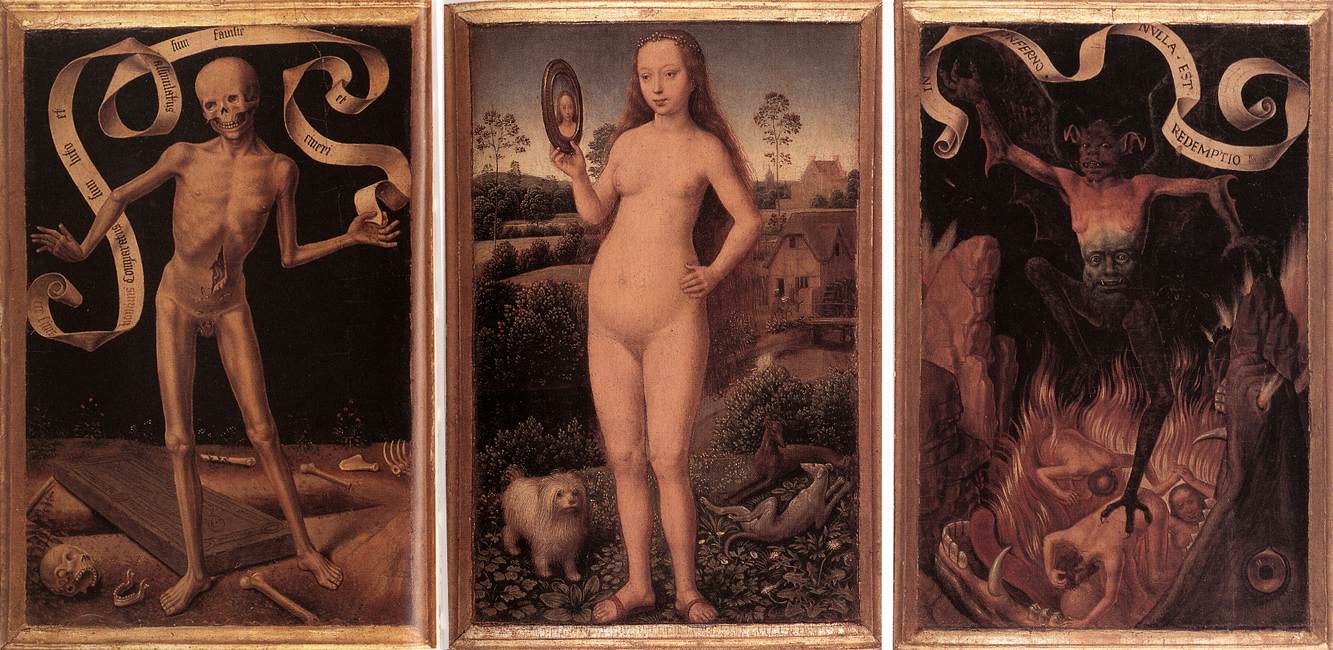
TheDance of Death by the German Michael Wolgemut (Nuremberg, 1434 - 1519) is part of the Schedelsche Weltchronik - The Chronicle of Nuremberg by the German historian Hartmann Schedel, one of the first large illustrated volumes in print. In the depiction of the Dance Macabre, death is presented as the force capable of reaching anyone. It possesses no social class. In the illustration, the figures dance in the company of skeletons, symbols of the late medieval vision of precarious life and death as the only certainty. The theme actually recalls the aftermath of the Black Death and the growing interest in vanitas, which prompted reflection on the meaning of human ambitions in the face of mortality.
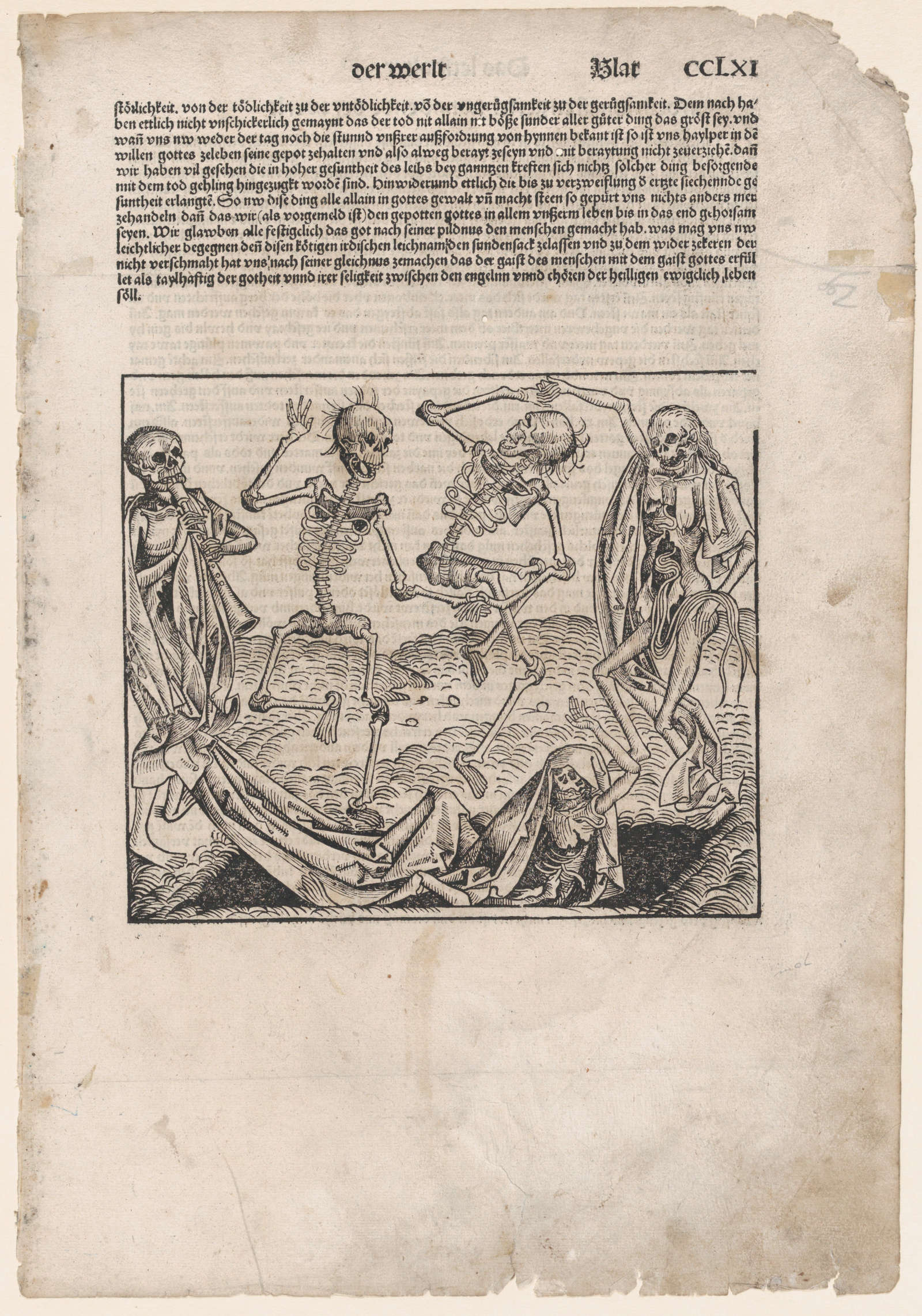
The FlyingDutchman (The Flying Dutchman) of 1860 by Charles Temple Dix (Albany, 1838 - Rome, 1873) evokes the legend of the phantom vessel, a ship destined to sail the seas as a sign of doom. The legendary figure of the ship, a protagonist of maritime folklore, usually appears during storms, with a ghostly light tending to red, seeming to emerge from the churning waves only to vanish into thin air. In the painting Dix captures the dramatic relationship with supernatural forces of the sea and beyond the Flying Dutchman’s endless doom. In this way he succeeds in infusing the scene with an eerie atmosphere that recalls the eternal curse of the crew doomed to wander without ever landing. Indeed, the ship’s legend is linked to Captain Hendrick van der Decken, who, braving the most adverse conditions of the seas, allegedly attempted to cross the Cape of Good Hope. Popular tradition has it that, for this challenge, the devil condemned him to sail without ever touching land. The future King George V also claimed to have glimpsed the Flying Dutchman during a voyage in 1881.
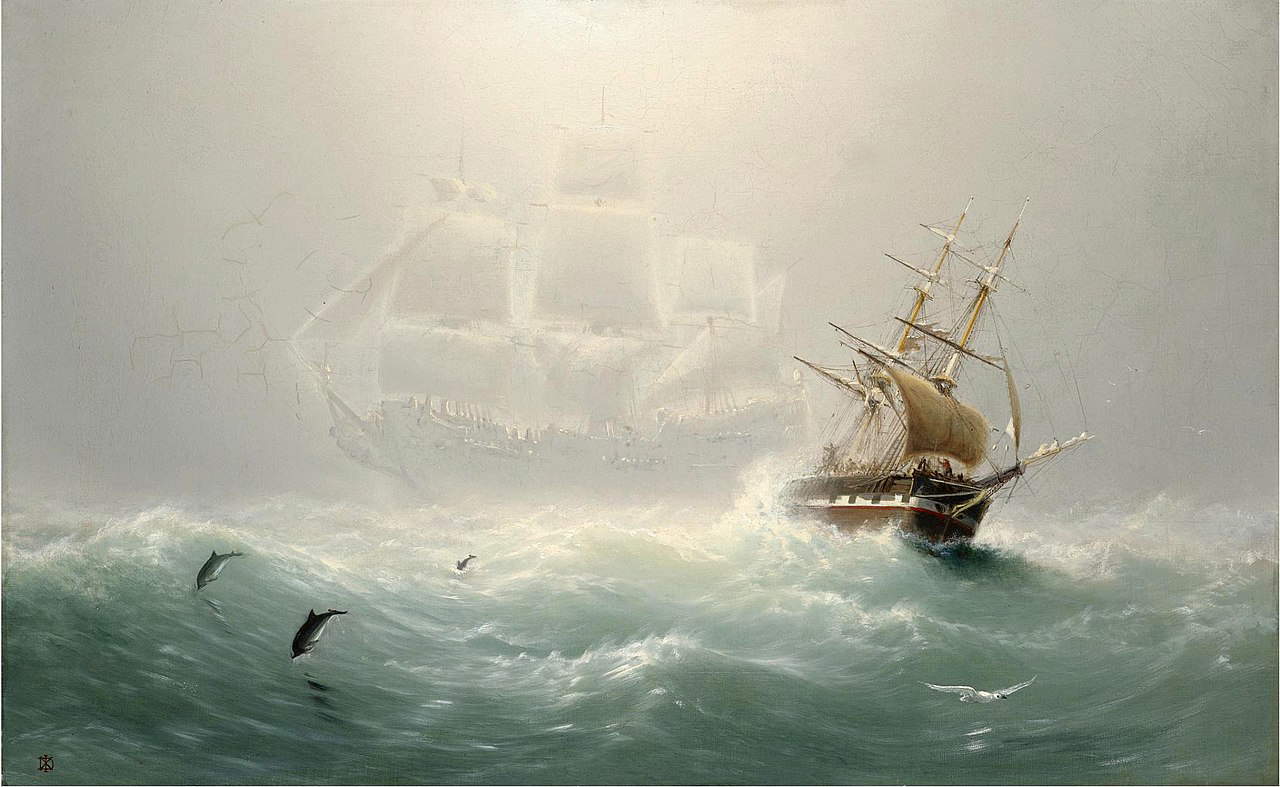
Henryk Weyssenhoff (Kaunas, 1859 - Warsaw, 1922), Polish landscape painter, illustrator and sculptor, was descended from the Livonian nobility but spent his childhood in the Urals, where he moved with his family after his father’s exile. Przeczucie is one of Weyssenhoff’s best-known works, created around 1893. The painting depicts a ghostly figure resembling the Grim Reaper, also known as the Grim Reaper of Souls, positioned in the center of the composition and immersed in a setting that appears to be a quiet village or farm. To complete the eerie atmosphere two dogs appear to howl as if sensing the presence of Death.
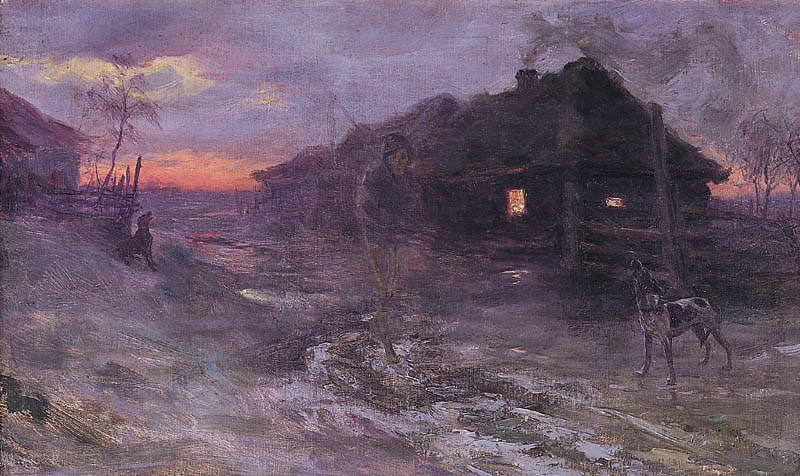
Albert Joseph Pénot (Xermaménil, 1862 - Paris, 1930) a lesser-known painter in the late nineteenth and early twentieth centuries, specialized in female nudes with a macabre and fantastic character, similar to those of his contemporary Luis Ricardo Falero, author of the 1878 painting Brujas yendo al S abbath (Witches at the Sabbath). Pénot devoted much of his artistic output to the depiction of the female body; nevertheless, if his subjects usually display seductive features and introverted looks, La Femme Chauve-Souris (The Bat Woman) made in about 1890 represents a turning point for the artist, exactly as much as Départ pour le S abbat (Departure for the Sabbath) of 1910. The figure of a nude woman with bat wings, black hair waved in the wind, resembling a femme fatale appears in the center of a cloudy sky. The painting shows strict symmetry and uses dark, nocturnal tones, except for a light in the upper left corner. In the work, the figure flies through the air, immersed in an occult aura and staring at the viewer with raised arms. Could it be casting a spell?
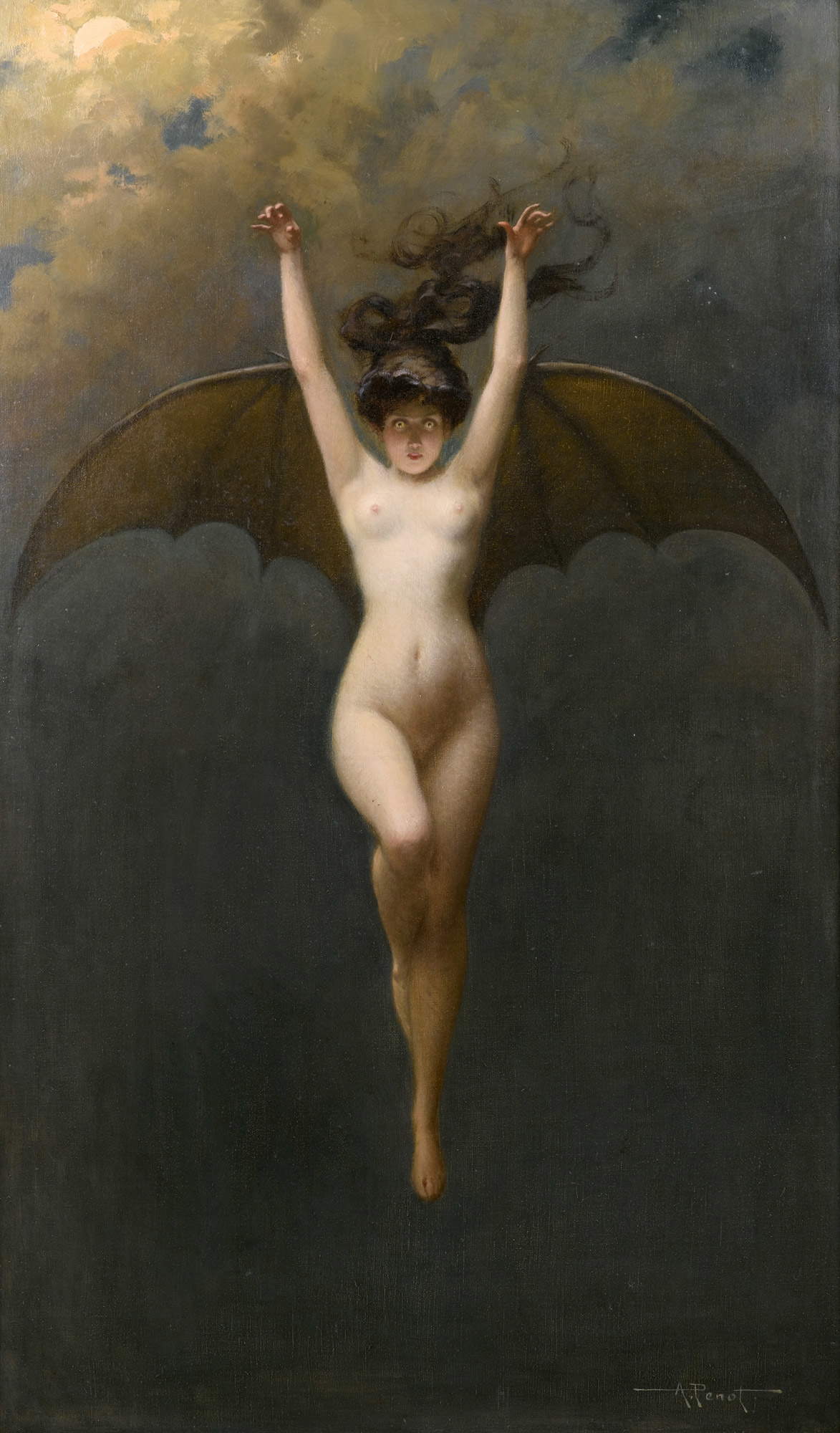
British artist Philip Burne-Jones (London, 1861 - 1926) executed The Vampire in 1897. The work is probably Jones’s best known and depicts a dark, dominating female figure sitting next to a lifeless man who is the victim of some sort of psychological rather than physical bite. Actress Patrice Campbell posed as a model for the vampire, who in the work embodies the Gothic theme of the femme fatale, a symbol of danger and temptation. It is also believed that actress Campbell, was Burne-Jones’s lover. The work aroused such fascination that it inspired Rudyard Kipling, to write a poem dedicated to the vampire. The painting thus deals with the ambiguity of seduction. It also influenced cinema by inspiring films such as A Fool There Was - The Vampire, from 1915. The dark and seductive figure of the femme fatale has left a strong cultural imprint and continues to inspire film and visual art. The figure of the vampire can be found in many cultures and eras, but it was not until the early 18th century that the term vampire became widely used, thanks to the influence of superstitions from southeastern Europe and the Balkans, where such tales were particularly entrenched. Fear of vampirism reached levels of collective hysteria. This caused in some cases practices such as driving stakes into corpses and accusations of vampirism against living people.
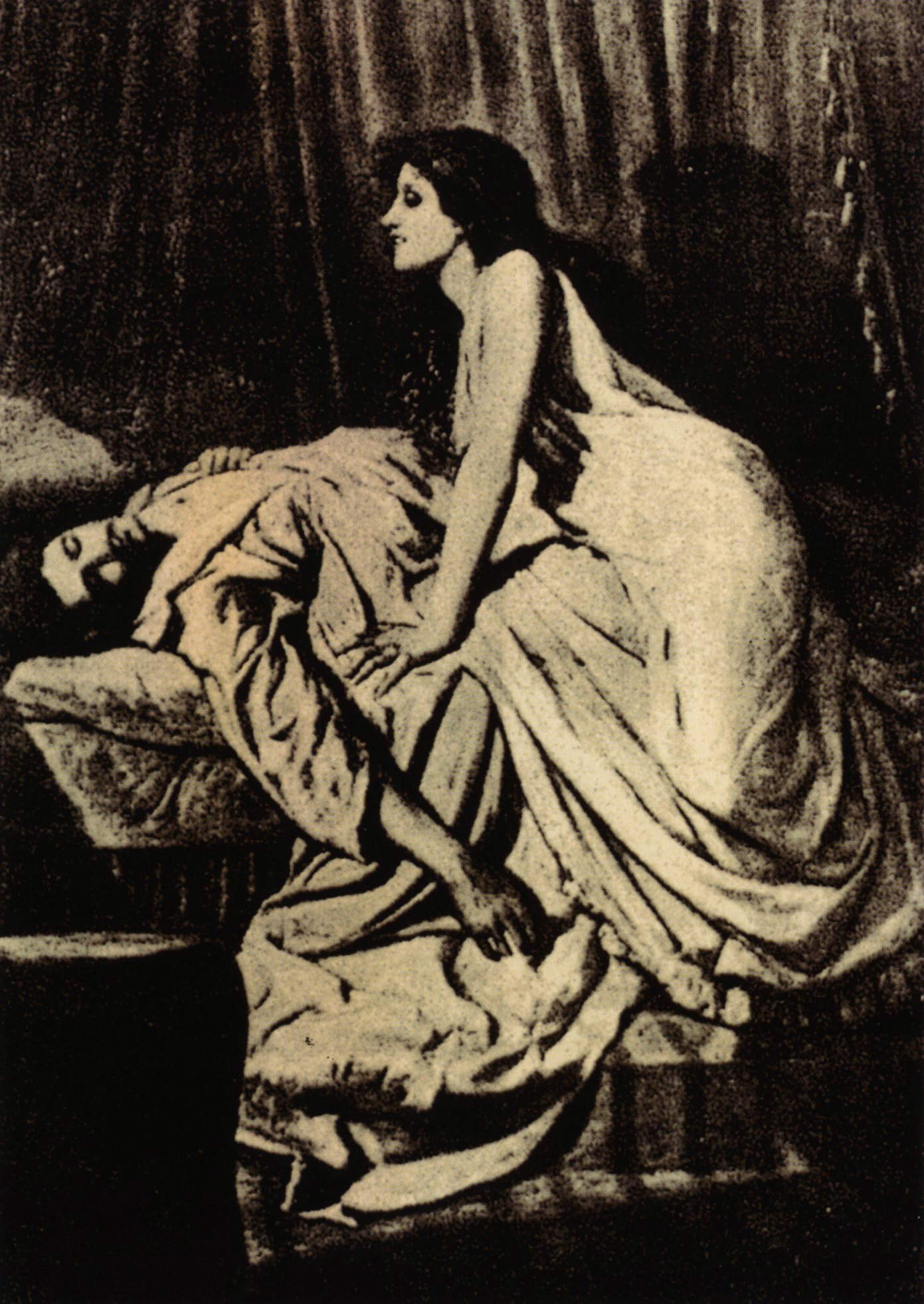
Frida Kahlo (Mexico City, 1907 - 1954), Mexican painter, painted in 1938 Niña con máscara de calavera - Girl with death mask, which depicts a young girl in a desolate landscape. The girl holds in her hands a marigold, a flower traditionally placed on graves to guide the spirits in their return during Día de los Muertos in Mexico. Her face is concealed by a mask in the shape of a skull, a symbol of Mexican culture associated with the celebration of death, while at her feet instead appears another mask with animalistic features. Through the work, Kahlo confronts the inexorable presence of death, a theme particularly dear to her and recurring especially after the painful miscarriage she suffered.
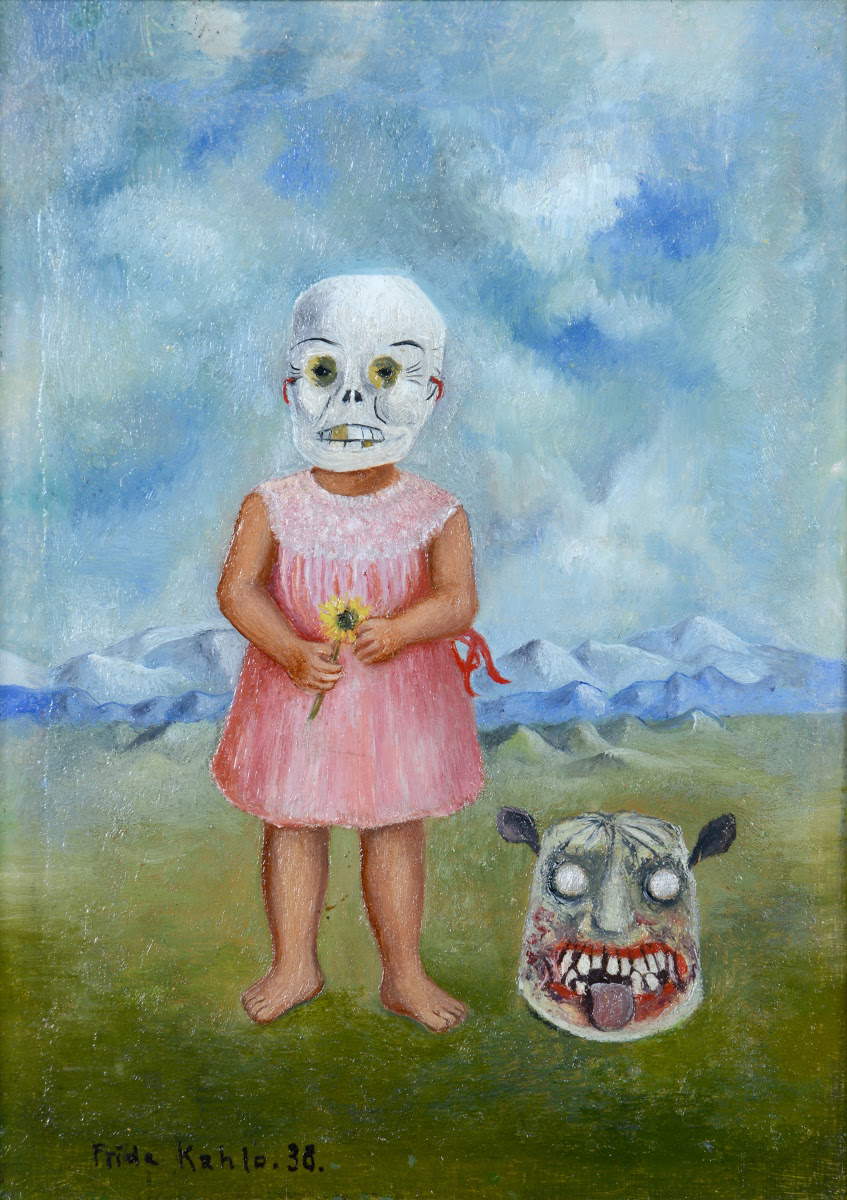
The HandsResist Him, painted in 1972 by Bill Stoneham (Boston, 1947), depicts a child and a doll in front of a glass-paneled door, behind which appear numerous hands pressed against the glass. Stoneham said the child is based on a photograph of him at age five, while the door represents the threshold between reality and imagination. The doll, on the other hand, symbolizes a guide who takes the child beyond this barrier. The hands in the work represent alternative lives or possibilities. In 2000, when the work was offered for sale on eBay along with a description suggesting it was haunted, it became the subject of a viral urban legend on the Internet. Stoneham later recalled that the owner of Perception Gallery in Michigan where the work was first exhibited, and the critic who reviewed it, both died within a year of contact with the painting. How is The Hands Resist Him also known? Its second title is The Cursed Painting of eBay...
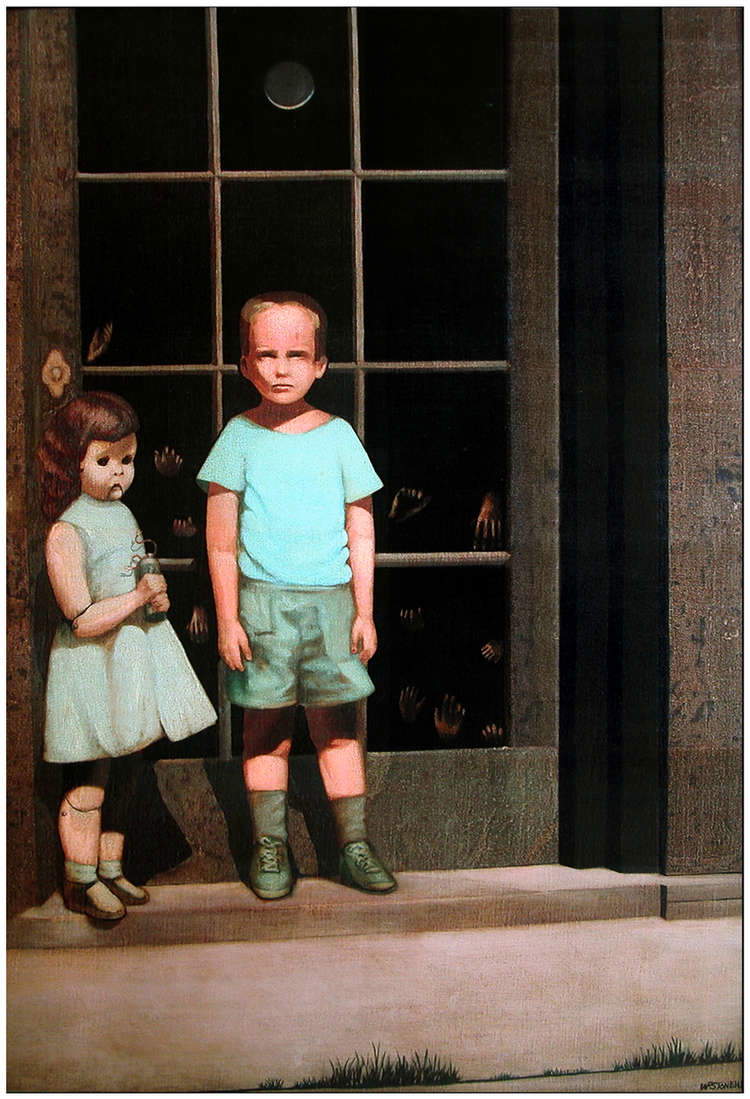
Warning: the translation into English of the original Italian article was created using automatic tools. We undertake to review all articles, but we do not guarantee the total absence of inaccuracies in the translation due to the program. You can find the original by clicking on the ITA button. If you find any mistake,please contact us.